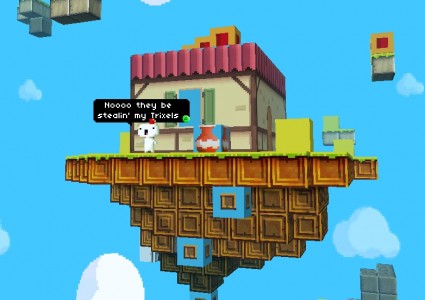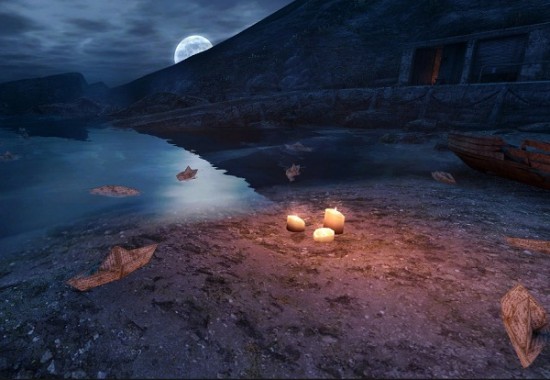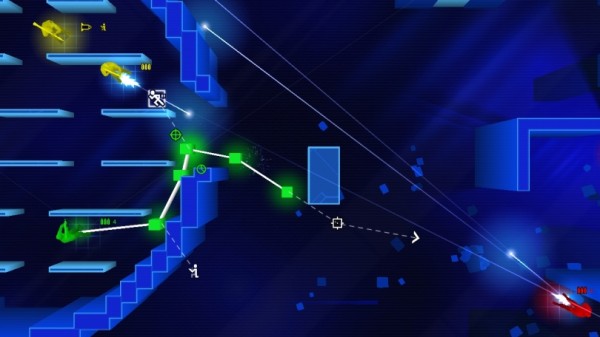
As my Steam stats will confirm, indie games are filling a larger role than ever in the current industry. I clocked in a measly 3 hours in the AAA zombiefest Dead Island, while Edmund McMillen’s The Binding of Isaac has claimed more than 50 hours of my time. Despite being generally smaller titles, they usually seem to hold my attention for much longer.
If you’re the same way, or are simply interested in seeing what this whole indie game fuss is all about, there’s a fantastic selection available to try out for free right now at ACMI in Melbourne.
The Best of the Independent Games Festival (IGF) is a small exhibition running until July 8, which showcases some of the winners and notable games to come out of the IGF this year. Some of them have become commercial success stories, some are hidden gems, but all are unique interpretations of traditional formulas.

Perhaps the centrepiece of the exhibition is Phil Fish’s Fez (say that ten times), which has been in development for five years, and winning awards for almost as long – including the 2012 IGF Grand Prize. The central mechanic of Fez is to swap your perspective between 2D and 3D: a level can be rotated 90 degrees left or right, which brings elements together in different ways and may open or close paths to the player. It’s like playing a game wrapped around a Rubik’s Cube.
Fez was released on XBLA a few weeks ago to unanimously positive reviews – unsurprising for a game whose impact has been felt long before it hit the digital shelves. It already has a series of accolades under its belt, and the story of its production featured in the documentary, “Indie Game: The Movie”.

Another entry has reignited the whole “What the hell IS a game, anyway?” discussion: the quietly moving, minimalist Dear Esther.
Players (for lack of a better word) simply wander a mysterious island, listening to narrated diary entries addressed to the titular Esther, and taking in the beauty the environment has to offer (which won the team the award for Excellence in Visual Art). There’s no jump button, nothing to pick up and use, no combat. Your only interaction with the game is to move, to see, and to piece together the story from letter fragments.
It’s been described as the video game equivalent of a poem: it only takes an hour or so to finish, but repeated play-throughs yield different results. There are different diary entries the second time around, and you may spot other things that reveal more, but never fully solve, the mysteries of the island. Keep an eye out for shadowy figures as well: people have reported ghost sightings at various points, but they aren’t your typical horror game jump scares – they’re subtle enough that many players miss them entirely.
It’s a fascinating exploration of the medium’s narrative and emotional potential. The fact that it has sparked debate over whether it’s actually a game or not, based off a set of criteria of “gameyness”, shows how limited our definition of “video games” is. Rather than throwing in scores, combat, and whatever else is “required” to make it a “game”, Dear Esther is what it is, and that’s how it should be. The definition should be altered to fit the product ascribed to it, not the other way around. Video games will never evolve if we force them to stick to tried and tired old conventions.
Whether or not you call it a “game”, Dear Esther is an important experiment, and one you’d do well to check out.

That’s not to say that developers won’t find fascinating things to do within the comfortable confines of video game conventions. Frozen Synapse borrows elements from a few classics, combining the familiar in an unfamiliar way.
It’s a twist on the old turn-based strategy game: instead of players alternating turns, all players simultaneously plot their next turn, submit them, and then watch how their actions intertwine.
The game has a dynamic somewhat like chess, forcing you to consider the potential moves your opponents might make, and use that to decide where to position your own pawns.
For example, you might assume an enemy unit will move down, so you pre-emptively send someone to cut him off. You have the unit crouch behind cover, and assume that when the opponent comes past, you’ll be able to take him out. But when the turn plays out, as you get into position, he goes around a corner, and comes at you from angle you hadn’t expected. Suddenly the cover you took is useless, leaving you vulnerable from behind.
There’s a plethora of options for movement and combat, and using them all effectively creates a level of strategy deeper than most. Without the immediacy of real-time strategy, players must plan their actions several turns in advance. Watching your well-laid plan unravel in a single turn, and being somewhat helpless to stop it, is more exciting than having the ability to call it off mid-execution.
Frozen Synapse has been out for a while now, so if you missed it, it’s worth looking into for strategy fans. It’s on Steam for the very reasonable price of $25 – which includes an extra copy for a friend, so you’ll have someone to play it with.
These are just three of the games on display at the Best of the Independent Games Festival exhibition. Head along to ACMI to check out the others, including the beautifully detailed point-and-click adventure Botanicula; the “ninjanitor” action of Australian-made parkour platformer, Dustforce; the touching, story-driven RPG, To The Moon; and the rhythm-based stealth of Beat Sneak Bandit.

